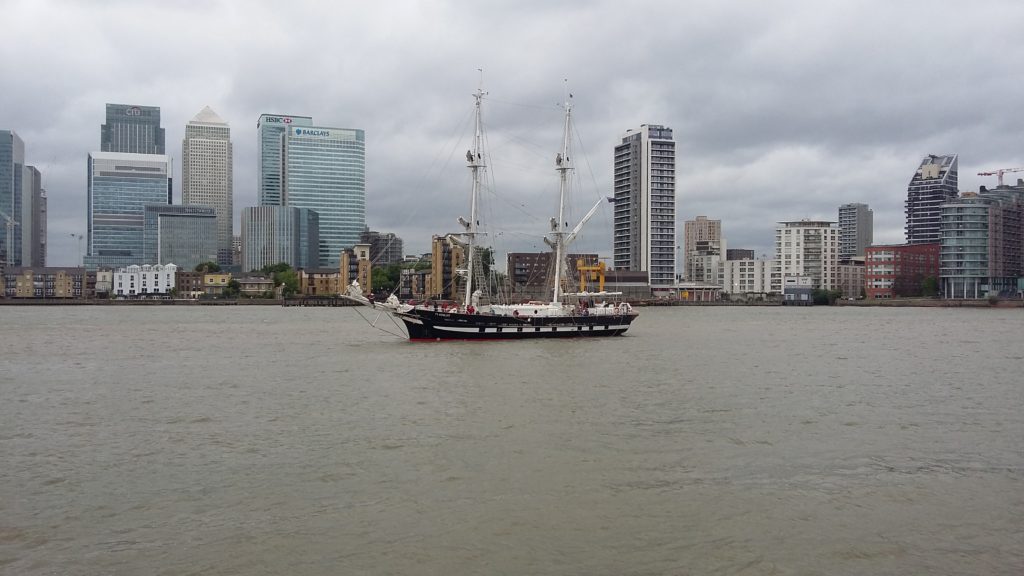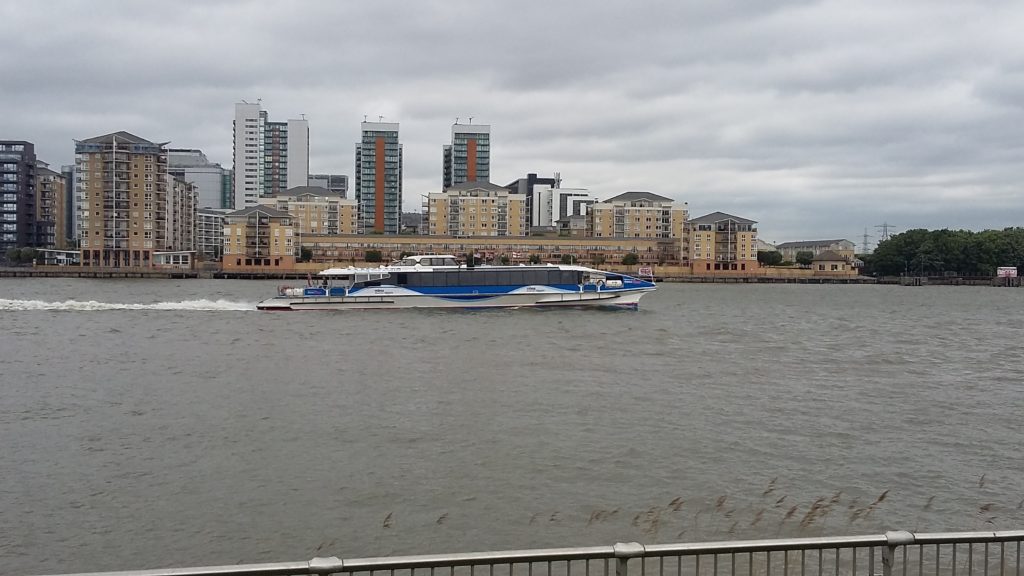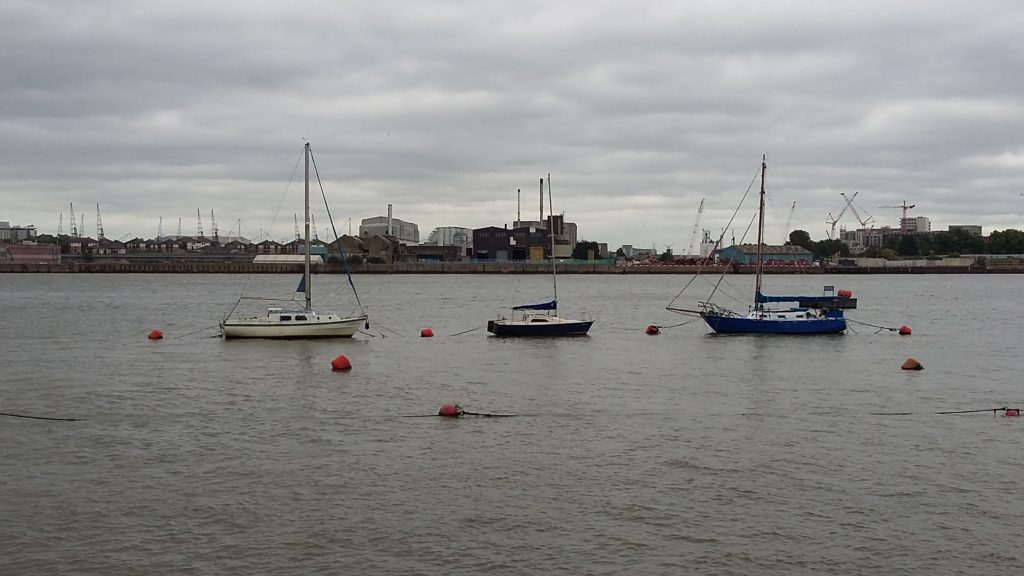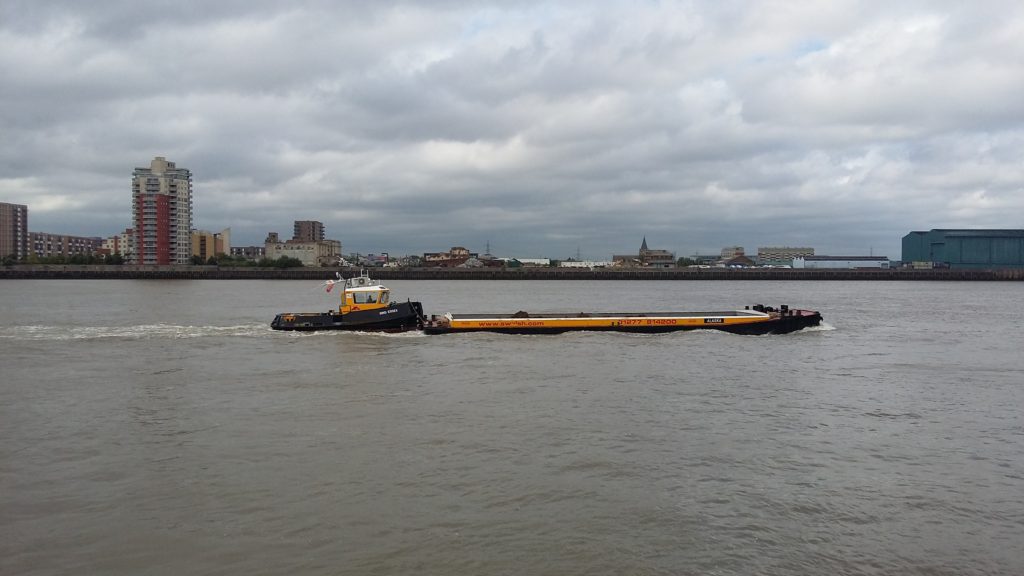
It’s the morning after the General Election here, and it’s difficult to concentrate on anything, but it’s also Friday, and I have finished stage six of my journey – I have walked all the way (with much extra wandering) from Teddington Weir to the Thames Barrier. Teddington is the furthest point upstream that the tide reaches, and the Barrier is another significant marker as it can be used to enclose the river and literally hold back the tide. There’s a whole lot of extended metaphor available in a river, and in tides, and in walking journeys, (and weather and paths and stories, and all the other things I met on the way); I have no end of material to play with as I continue to write.
Boat pictures today, as one of my main explorations has been around the many different ways in which the river is used. Tourism and leisure are central to it of course, but they’re not everything. These four boats are four different pieces of the pie chart (dull photos again I’m afraid, weather was beyond rubbish yesterday).

The first time I saw the Thames Barrier was in 2014, when we went up the Shard with some friends. I don’t know why I was so excited when I realised that if I leaned right over and squinted a bit I could see the Barrier, there are loads of other landmarks visible but I just stared at that tiny row of dots. Yesterday, it was in sight continuously from when I rounded the top of the Greenwich peninsula, and again, I was excited as I watched it grow larger. Sitting in the cafe afterwards, looking back at the Barrier, I tried to figure out what was so fascinating to me, and didn’t form any satisfactory conclusions.
I did a bit of googling just now to see if there is an answer to why the Barrier gets my attention as opposed to, say the Millennium Bridge. There’s quite a few hits (here for example) on research about things like perceived effort, celebrity or historical association, stated value, etc, but none of those really answer my question. I came across one page (which doesn’t seem like a particularly strong source) which suggests it is about something resonating with one’s ‘inner world’. That sounds a bit closer to what I’m trying to get at. There’s the water connection, and I’ve been aware for a while that I like juxtaposition – the old next to the new (e.g. architecture in the City) and, as in this case, nature next to industrial architecture. I have a poem about an oil drilling platform for the same reason (water connection too).

And, of course, there’s the simple part of the answer which is that I’ve been planning this project for more than six months, preparing, walking, reading and writing for over six weeks. And reaching the Barrier was a significant marker in a significant body of work. It was never going to be a challenge, but I was excited, I hoped it would be an adventure and it was – far beyond expectation. I have a lot of work still to do – stories to write and polish, and a hefty critical reflection to write as well – but I’ve walked forty miles and I know hundreds of fascinating things about the Thames that I didn’t know before, and I am absolutely thrilled with the project so far.

Stage six stats
Distance: 5.5 miles
Weather: Very windy and threatening rain.
Stops: Greenwich Pier (start), Cafe under the Emirates Air Line, Greenwich Pen Ecology Park, Thames Barrier Information Centre.
Highlights: A sailing ship (chugging, not sailing sadly), the water lilies in the ecology park, a friendly construction worker who helped me find my way out of the warren of building sites, the Barrier itself, of course.